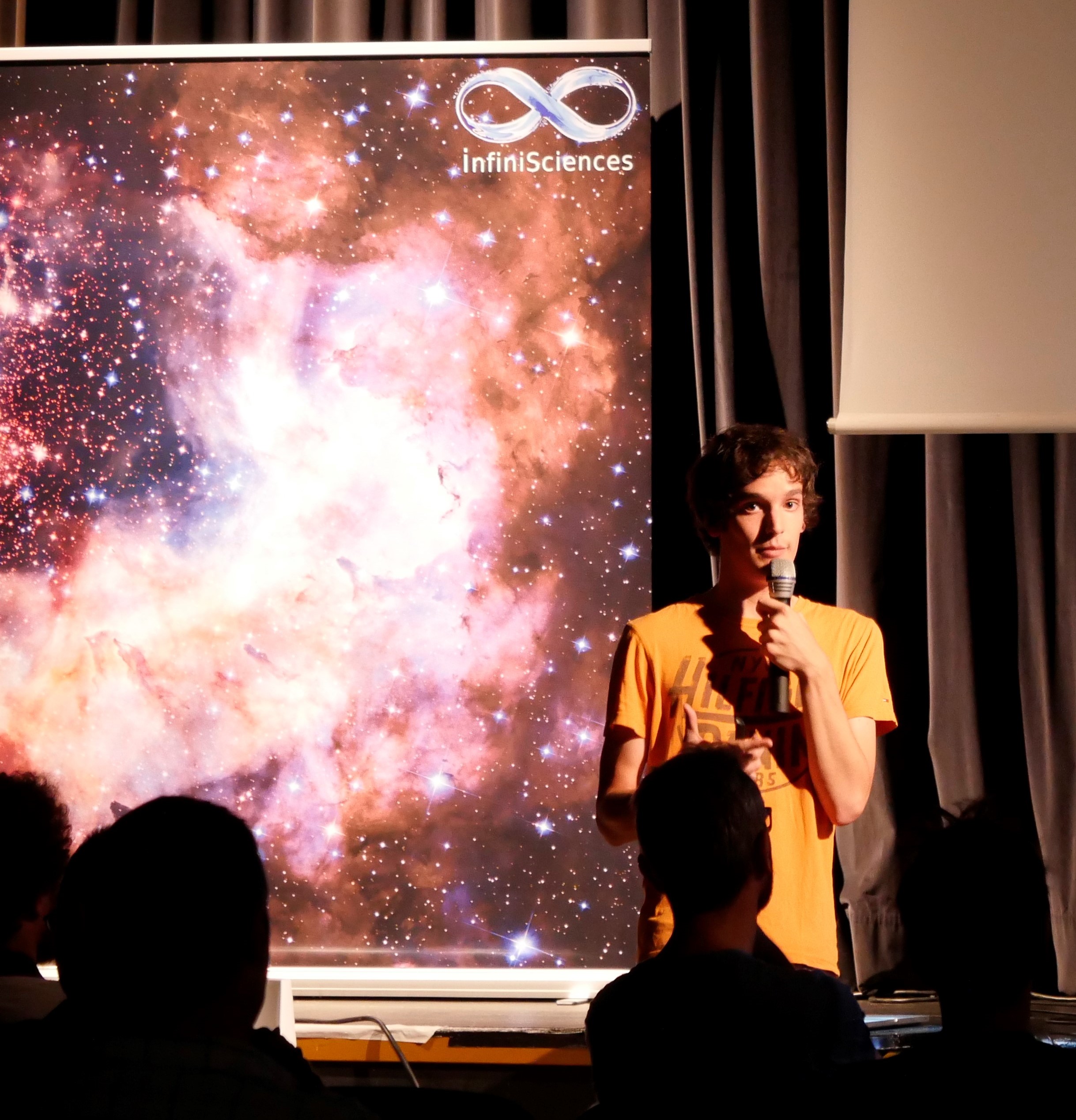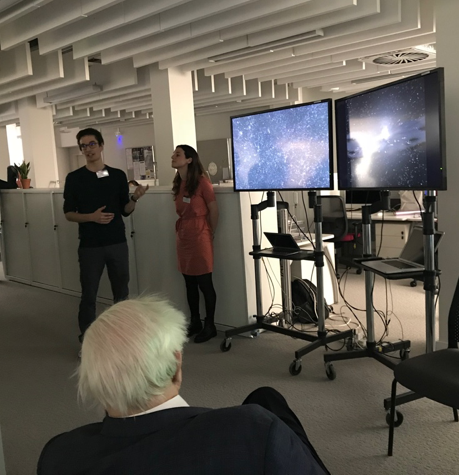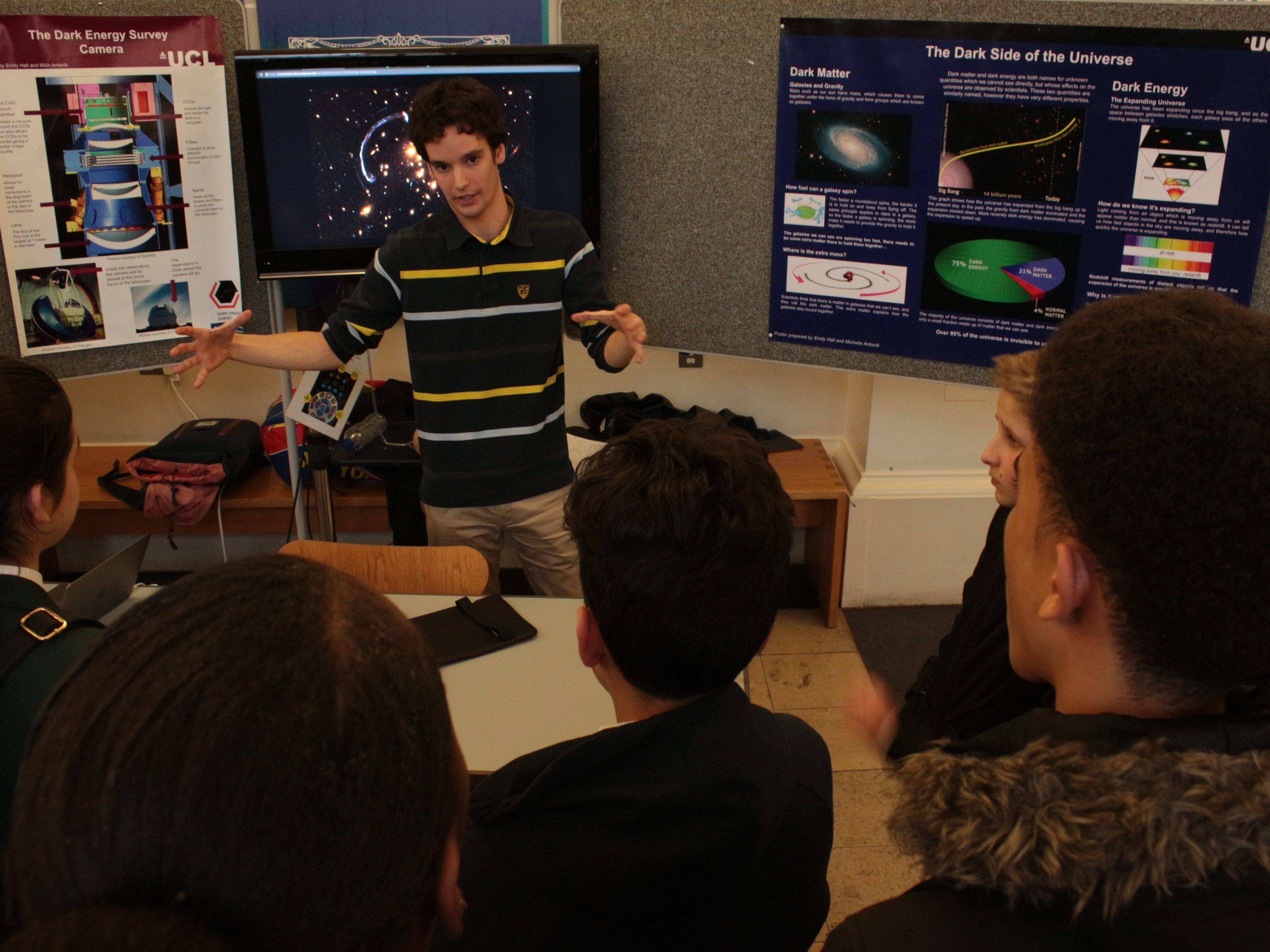Research
I am primarily interested in understanding how structures in our Universe came to be, and how they can be used to answer fundamental questions such as what is our Universe made of? what are dark matter and dark energy? where do we come from? These questions have led me to study and probe the connection between visible and dark matter, using both analytical, numerical and statistical models. My main findings are summarized below, all my publications are publicly available on arxiv and referenced on NASA ADS.
Turbo-charging galactic outflows
Explosions of supernovae within a galaxy can drive powerful outflows of gas, which are key to reducing fuel for further star formation and regulate the growth of the galaxy over cosmic time.
In this work, we study how limited numerical resolution impacts our understanding of simulated galactic outflows. Introducing a new technique to gradually increase numerical resolution in the outflow, we find that a more accurate treatment of their thermodynamics systematically increases the mass and energy carried away by the outflows. This boost, by up to a factor five, is achieved without modifying any astrophysical models within the galaxy, strongly motivating a better treatment of outflows when modelling the regulation of galaxies over cosmic time.
The imprints of early mergers on galaxies like our Milky Way
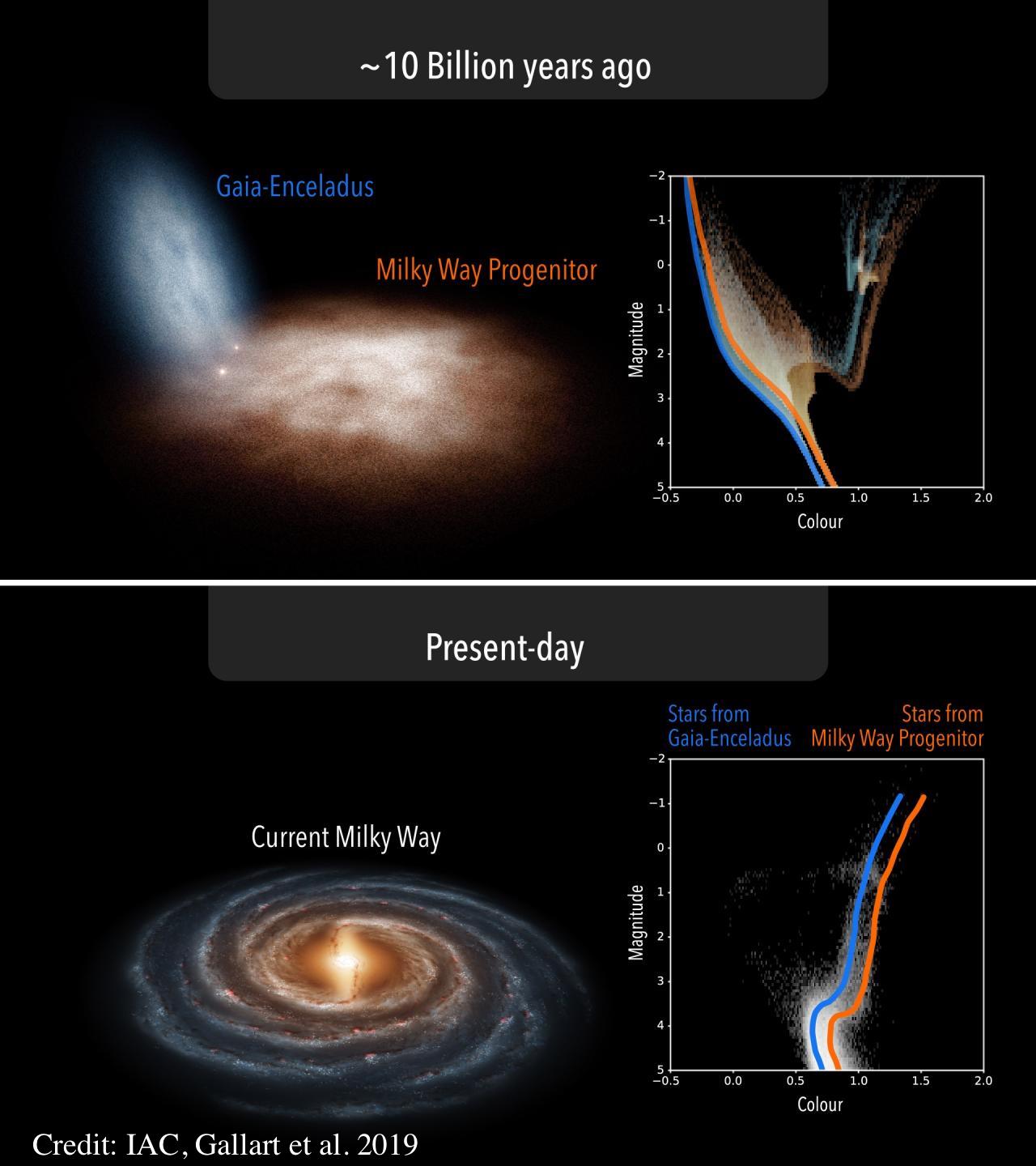
Recent results from the GAIA telescope have revealed radially-biased, low-metallicity stellar debris around the Sun. This is most commonly interpreted as the remnant traces of the collision between a dwarf galaxy and the proto Milky Way 10 billion years ago.
In this work, we use a new suite of high-resolution cosmological simulations of Milky-Way-like galaxies to test this hypothesis. Using the genetic modification, we grow and reduce the mass of the impacting dwarf galaxy, fixing the cosmological large-scale structure and the total stellar and dynamical mass of the Milky Way.
Comparing the consequences of these different histories, we find distinct galaxy morphologies today, but similar stellar debris whether the collision is made extremely minor or major. We explain this degeneracy through the growing importance of stars formed during a starburst with another, even earlier merger, and show that debris observed today likely come from multiple mixed origins. This makes it more chalenging to reconstruct our Galaxy's past, but more informative about how galaxy formed more than 10 billions yeards ago.
How cosmological merger histories shape galactic outskirts

The diffuse stellar halo surrounding galaxies provides a unique window
on the formation and evolution of galaxies. It is
shaped by the accretion and stripping of stars previously formed in smaller galaxies
that are deposited in distinct patterns in galatic outskirts as in NGC 474 above.
It therefore traces both the host’s past merger history and the star formation histories of dwarf galaxies unobservable directly.
However, for a given galaxy, the details of its merger history are stochastic: they are seeded by random early universe perturbations
inflated to cosmological scales. This stochasticity couples to the strongly non-linear response of the galaxy to
generate diversity in stellar halo observables.
In this work, we introduced a new approach to study how this interplay
shapes stellar halos. By varying each aspect independently with flexible methods,
we showed how diverse cosmological scenarios yield extensive scatter in stellar halo content and structure (greatly summarized on astrobites here).
We further isolated the distinct sensitivity of this scatter to galaxy formation physics
within the host central galaxy, and within the small building blocks to the halo. This opens
new prospects to constrain star formation and evolution at different galactic mass-scales with stellar haloes.
Re-igniting star formation in tiny galaxies
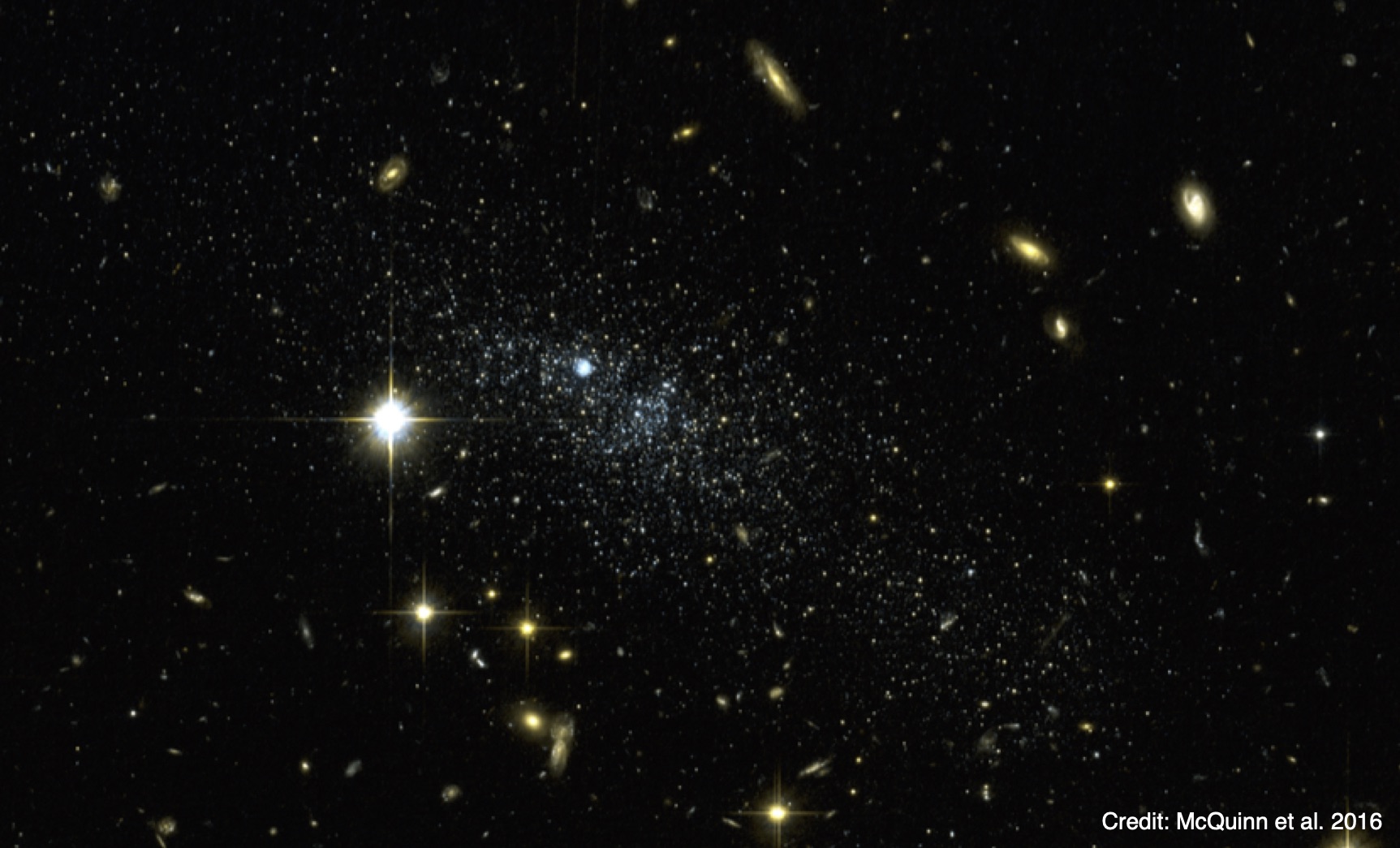
Small, very faint dwarf galaxies are typically observed without traces
of recent star formation - most of their stars were born 10 billions of years
ago before the Universe was heated by its accumulating starlight. A
growing number of exceptions to this scenario have been noticed however;
but how galaxies such as Leo P
(picture above) and Leo T have managed to sustain the formation of new stars
until the present day remains an open question.
In this work,
we show, using numerical simulations, that dwarf galaxies can grow
just enough to slowly accrete fresh gas, eventually fueling the re-ignition
of their star formation after a few billions of years.
The generic nature of this uncovered mechanism predicts
that many similar galaxies to Leo P and Leo T should exist
and are waiting to be discovered
by future, more sensitive instruments. These results caught the specialized press' attention, and
will soon be communicated to the general public.
How diverse are extremely faint dwarf galaxies

With improving instruments over the years, astronomers have kept
discovering both fainter and more diffuse dwarf galaxies (such as Eridanus 2
in the above picture). These discoveries have constantly
pushed back our understanding of how small, diffuse and faint a galaxy
is allowed to be in our Universe.
In this work, we combine cutting edge numerical simulations of dwarf galaxies
with a new approach, genetic modifications, to probe and predict
the expected diversity in the masses and sizes of dwarf galaxies.
Our simulations recover galaxies similar to currently observed ones,
but also showcase the formation of very faint, highly diffuse dwarfs outside
of the detection capabilities of current facilities. Despite our
repeated efforts, our results predict that many more dwarf galaxies
are yet to be discovered.
Genetic modifications: a new method to study the formation of halos and galaxies
Over the course of my PhD, I participated in the development of "genetic modifications",
a new approach that allows us to modify specific aspects of a galaxy's cosmological
merger history in a controlled way. This enables us to construct a causal account between
a galaxy's history and its final observables.
I first strengthened the theoretical foundations of the method,
and then implemented a new kind of modifications to target multiple mergers at once.
Tools to construct and craft genetically modified initial conditions are now publicly available
to the community.

